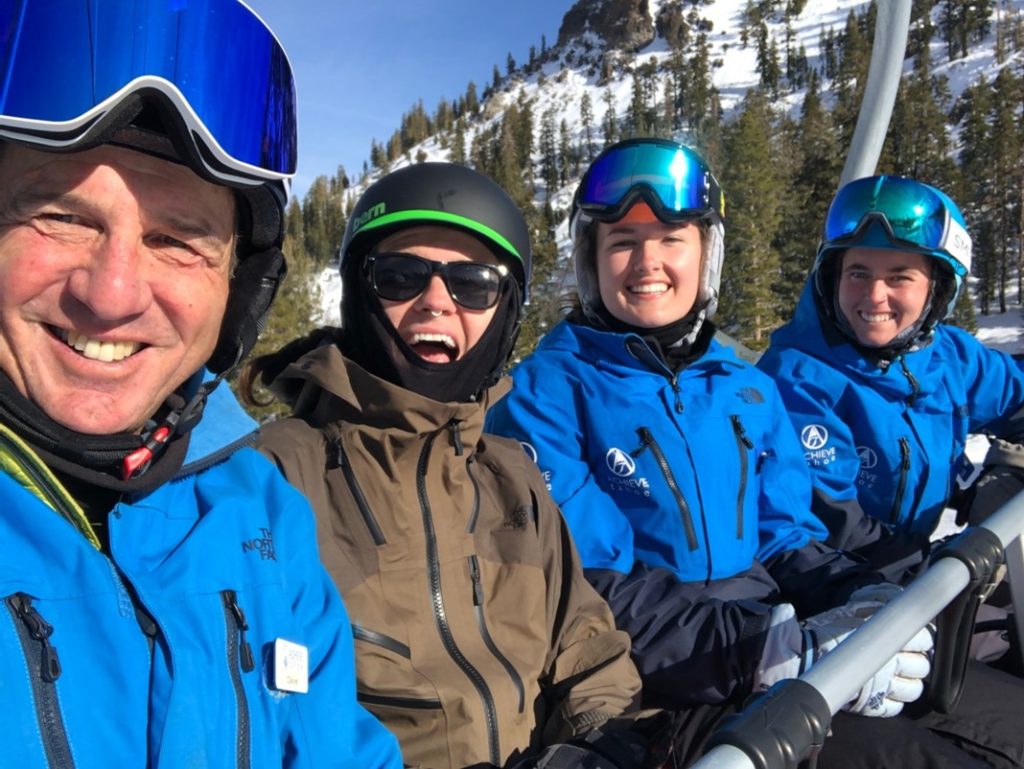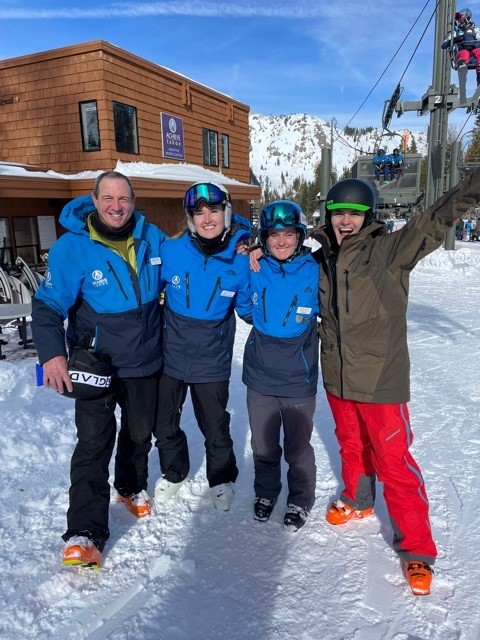By Caroline Olsen, 2021-22 Winter Intern
Following the first big storm of the season, I was eager to teach my first lesson as an Achieve Tahoe intern. The night before, I reviewed my participant’s information: Alina Petrik, ankle-foot orthosis (AFO) brace, severe left leg muscle atrophy. Our lesson would be Alina’s first-time skiing since her injury, and it would be my first time teaching an adaptive snowsports lesson. I didn’t know how Alina was feeling, but I was nervous.
On December 18th, Alina walked through the door with her dog, Willow, running beside her. “Alina showed up with this unbelievably positive attitude,” said Dave Littman, the lead instructor on the lesson. Though she was initially nervous about getting her paralyzed left foot into a ski boot, with a little expert assistance from Dave it slid right in. What’s more, we realized that the stiffness of her ski boot supported her ankle, allowing her to find the same stability she has with her AFO brace.
As we began to assess Alina’s physical capabilities, we learned that Alina is a paragliding expert. She had learned to ski while training to “speedride” – a winter discipline of paragliding that uses a paraglider wing and skis to descend a mountain – and had been injured while paragliding in Salt Lake City in October 2020, crashing and injuring her ribs, pelvic region, and spine. “I spent a month and a half in the hospital, I’m 2 inches shorter, and have nerve damage to my left leg which causes motor function issues,” Alina said. Initially, her doctors told her that it was unlikely she’d regain function below the knee, but through intense physical therapy and the support of her High Fives Foundation sponsorship, Alina showed up ready to take to the mountain again and continue working towards her goal of speedriding.

Our focus for the lesson was rebuilding her confidence on snow. Dave guided her safely down the terrain while Karen and I skied behind, blocking her from uphill traffic. As we learned more about her experience as a paraglider while riding the chairlift, we gained insight on how to best lead her lesson. “One of the really cool moments was when she equated the beauty of a ski turn with the beauty of a parasail turn,” Dave said. In our first few laps, Alina hesitated to shift her weight to her left leg, but several green runs later, she was carving turns on both sides. As I saw Alina start to trust herself more and commit to her turns, I began to have more confidence in my ability to analyze her movement patterns and provide technical suggestions on how she could improve her skiing.
For our final run of the day, we moved up from the beginner slopes and rode the Treeline Cirque Chair. Despite the new slopes’ steeper pitches and choppier snow, Alina didn’t waver. “We finished in intermediate terrain with her doing linked, beautifully shaped speed controlled turns,” Dave said. “Alina smashed any expectations that the teaching team had.”

Watching Alina ski down the mountain I was awestruck at the progress she had made. While I wasn’t there to witness the everyday effort and intention that got her from her injury to being back on skis, I was proud to be a part of all that she had achieved during her lesson. “I was totally blown away by my abilities… It’s easy to get into your head when faced with so many daily hurdles and [skiing Treeline Cirque] gave me the confidence to keep pushing harder,” Alina said. “It was exhausting, but it’s the motivation I need to keep working towards my goals …The mountains are my happy place and, that day, I came home.”

